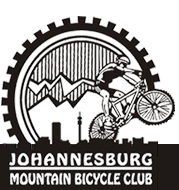Quadriceps Muscle Imbalance and Risk of Injury to Knee
Back to overviewWith South Africa’s abundance of mountains, wild life, open space and picturesque beauty, it’s no wonder mountain biking is becoming a popular sport among South Africans and international tourists. With mountainous regions found in all nine of South Africa’s provinces, it’s hard not to find a mountain bike nearby.
Whether you are a seasoned professional or just starting out, correct training is imperative – that doesn’t just mean “time in the saddle”. Many mountain bikers have made this grave error and have paid the price. Due to the nature of the uneven mountain bike trails and the surrounding terrain one muscle group in particular needs to be well conditioned. The muscle group in question are the quadriceps muscles – the reason for giving them extra attention is twofold: firstly stronger quads will aid in increased force generation which is needed to move over uneven terrain, the second job is to act as a shock absorber and help the knees in dissipating upward force coming from the ground.
Imbalance in strength and firing (contracting) of these muscles during knee extensions can affect proper movement mechanics of the knee. Many people may not realise that the quadriceps muscle is made up of four individual muscles – vastus medialis oblique (VMO), rectus femoris, vastus lateralus (VL) and vastus intermedialus. The most important of these muscles is the VMO. The general movement of the quads is knee extension; however the quads also directly affect the way in which the knee cap (patella) glides up and down in its groove on the femur.
In an optimally functioning quad (no imbalance), the patella runs evenly up and down in its groove – however if there’s an imbalance in the quads during knee extensions there is uneven force distribution acting on the patella. This results in an altered glide of the patella in its groove, causing the patella to grind on usually the lateral side of the groove which results in pain being experienced in the knee.
Muscle imbalance in the quadriceps is common and is usually only noticed when muscles start fatiguing or during maximal effort. Common reasons attributed to quad muscle imbalances are poor muscle development due to inadequate training, poor biomechanics, and/or other imbalances of other muscle groups, such as the gluteal muscle group.
The most common quad muscle affected that results in the imbalance is the VMO, this is generally due to the VMO being the most sensitive of the quadriceps, and therefore the quickest to be inhabited by pain and inflammation. This forms part of an unforgiving cycle – muscle weakness leads to incorrect gliding of the patella causing pain, pain inhabits VMO, further increasing the muscle imbalance (weakness) which results in more pain and swelling and further VMO inhibition and so the cycle continues.
Correct training for mountain biking should also include a strong resistance training regiment focusing on all four quads, gluts, hamstrings and core exercises as well as time in the saddle…
